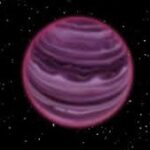Rogue planets, also known as interstellar planets or nomad planets, are some of the most fascinating and mysterious objects in our universe. Unlike Earth or Mars, these planets do not orbit a star. The concept of rogue planets opens up a world of speculation, scientific curiosity, and the possibility of understanding new forms of planetary evolution. In this article, we will explore rogue planets, how they form, how they are detected, and why they matter in the larger context of astronomy and astrobiology.
What Are Rogue Planets?
A rogue planet is a planetary-mass object that orbits the galaxy directly instead of orbiting a star. They are often called “free-floating planets” or “orphan planets” because they do not have a parent star to revolve around. Some of these planets were likely formed around stars and then ejected by gravitational forces; others may have formed in isolation from the beginning, in a similar way to how stars form.
Nevertheless, advances in telescope technology and space-based observatories like the Nancy Grace Roman Space Telescope and ESA’s Euclid Mission are providing astronomers with better tools to spot them.
How Do Rogue Planets Form?
There are two leading theories regarding the formation of rogue planets:
- Ejection from Planetary Systems: Most rogue planets are believed to be planets that were once part of a solar system. During the early stages of planetary formation, strong gravitational interactions, especially with giant planets like Jupiter, can sling smaller planets or even large ones out of the system entirely. This process is known as gravitational ejection.
- Star-like Formation: Some rogue planets may form independently in space, much like stars do. They can form from the gravitational collapse of gas and dust clouds, but their mass isn’t sufficient to trigger nuclear fusion, the process that powers stars. This leads to the birth of a planet-like body, rather than a full-fledged star.
How Many Rogue Planets Are There?
One of the most shocking ideas in planetary science is that rogue planets could outnumber stars in the Milky Way galaxy. A 2021 study using data from the MOA (Microlensing Observations in Astrophysics) project and other telescopes estimated that there could be billions, possibly trillions of rogue planets floating in interstellar space.
Some estimates suggest that for every star in the galaxy, there could be one or several rogue planets, meaning our Milky Way might be teeming with these dark wanderers.
How Are Rogue Planets Detected?
Since rogue planets do not emit light or reflect much of it, detecting them requires advanced techniques:
- Gravitational Microlensing: This is the most successful method used so far. When a rogue planet passes between a distant star and Earth, its gravity can bend and magnify the light from that star. This momentary brightening, lasting from a few hours to a couple of days, can be captured by sensitive telescopes, indicating the presence of a rogue planet.
- Infrared Observation: Some rogue planets emit faint heat signatures that can be detected in the infrared spectrum. This method requires highly sensitive instruments aboard telescopes like the James Webb Space Telescope (JWST).
- Direct Imaging: In rare cases, large rogue planets far from any bright background light might be captured via direct imaging, though this is extremely rare.
Could Rogue Planets Support Life?
The idea of life on a rogue planet may seem unlikely due to the lack of a sun-like star to provide energy. However, some scientists believe that life could exist under certain conditions:
- Geothermal Heat: If a rogue planet has a hot core, it could generate enough internal heat to support subsurface oceans, much like Jupiter’s moon Europa or Saturn’s Enceladus.
- Thick Atmospheres: A dense atmosphere rich in hydrogen could act as a blanket, trapping heat and potentially keeping surface temperatures stable enough for liquid water.
- Subsurface Life: Microbial life could exist below the surface, feeding off chemical reactions, independent of sunlight.
Although these scenarios are purely theoretical at this stage, they are not scientifically impossible.
Why Are Rogue Planets Important?
Rogue planets help scientists answer key questions about the formation, evolution, and diversity of planetary systems. They also raise new possibilities for how and where life might arise in the universe. Moreover, studying these planets can provide clues about the dynamics of early planetary systems, including our own solar system’s chaotic past.
In addition, rogue planets might become future targets for space exploration. If technology advances to the point where we can travel vast interstellar distances, rogue planets could serve as waystations or even homes for future generations of space travelers.
Conclusion
Rogue planets are silent, wandering enigmas of the cosmos. They challenge our traditional view of planets as being tied to stars and open up new lines of inquiry into how diverse planetary systems can be. As technology improves, astronomers may uncover more of these dark nomads and perhaps even find one that offers signs of life. Whether they are lifeless rocks or secret havens of alien biology, rogue planets remind us of how much we still have to learn about the universe and how much wonder it holds beyond the boundaries of our solar system.



